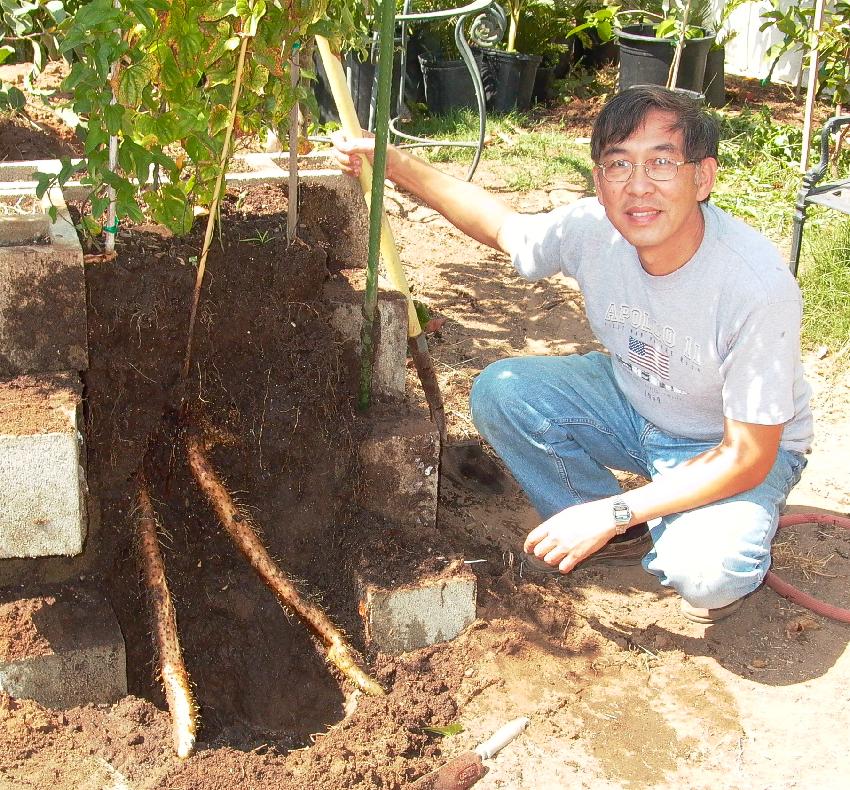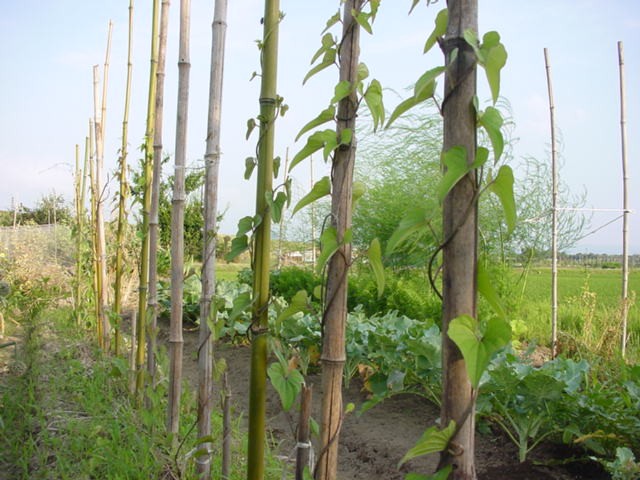Growing Nagaimo in San Diego (Chinese yam, long yam, Yamaimo)
This is a tuber known for great nutrition value. The tuber has a creamy texture and is not sweet.
The Japanese eats this without cooking. I think it tastes good after cooking. Even through the tuber is well known,
few people have seen the plant and the leaves. It is very similiar to sweet potato. The vine is purple,
the leaf is heart shape with a long pointed tip.

My harvest in October 2004. The tuber starts about 15 inches below the soil level and grows straight down.
The tuber is 28 inches long and 1.5 inch diameter. This is the size after the plant is in the ground 15 months.
The first time I tried to grow this, it was a challenge to dig down 5 feet
deep.
In the Chinese books, the nagaimo grows to 4 inches diameter in 6 to 8 years.

A row of nagaimo plant in Japan.
I have another surprise in 2005. I cut off lots of vines from previous years
to composte.
Now I found that the seeds on the vine are vital. Little
nagaimo plants are coming up
everywhere from the seeds that I spread with
the composte. Even when
the plants are growing strong, they are not very
useful when the location is wrong.
Because the harvest is a big chore and
I cannot dig a 6 feet hole next to my avocado tree.
To be useful, each
seedling has to be transplanted into soft soil that is suitable for harvest.
On page 45 of John Keys' Chinese Herbs:
The tubers are employed as a nutrient
tonic and digestant in chronic enteritis and diarrhea;
also prescribed in
nocturnal enuresis, spermatorrhea, neurasthenia.
Dose: 10 to 30 grams.
The nagaimo root is a cylinder shape and the yamaimo root is shorter and
more barrel shape.
After doing more reading, I know this plant can grow
wild in some area of United States. Unless
the soil is deep and really
soft, the root may be deformed or the root can break into small lobes.
A Grower in UK
A Grower in China
Plants for a future
Dragon fruit
Amazing and awesome fruits
plants available for sale by email
Book to grow dragon fruit
Book on ecology and gardening
Last update: 7/2/2007
Copyright 2004 by William Chow
| |